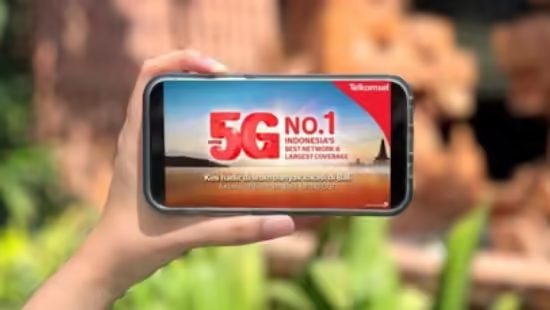
AI Uplink Traffic to Overwhelm 5G Networks by 2028
We’ve all heard the buzz about artificial intelligence (AI) and its potential to revolutionize everything from our homes to our cars. But here’s something we might not have thought about: how is AI impacting our mobile networks? As AI-powered applications evolve, they are set to create a tidal wave of data traffic, unlike anything we’ve seen before. Mobile Experts, a market research firm, has released a new report predicting that AI’s growing data demands could overwhelm the 5G network by 2028. AI uplink traffic
Let’s dive into how AI might just break the 5G network, what’s causing this surge in data, and what the future might look like for our mobile connections.
The Surprising Impact of AI on 5G Networks
5G Networks: Not Ready for AI’s Data Demands?
The 5G network was designed to handle significant amounts of “downlink” traffic, like when we stream a movie or download a file. However, AI applications like digital assistants and real-time augmented reality (AR) tools require more “uplink” traffic—data sent from our devices back to the network. This shift is proving to be a game-changer.
Why Uplink Traffic is the New Bottleneck
Think of uplink traffic as the quiet underdog that’s suddenly stepping into the spotlight. While downlink traffic has been the main focus for years, the tables are turning. New AI tools are uploading vast amounts of data—especially video content—creating a significant load on the network.
The Role of AI Assistants and Augmented Reality (AR)
AI assistants like Siri and Google Assistant, along with advanced AR applications, are leading the charge. As these tools become more sophisticated and embedded into everyday life, they rely heavily on cloud processing, which requires more data to be sent back and forth between devices and servers.
- AI Assistants: With enhanced capabilities, they’ll soon need to upload larger files, including high-definition videos and complex datasets.
- AR Applications: Think of apps for fashion, navigation, and architecture that need real-time video analysis—these require massive uplink bandwidth.
The Growing Role of Video in AI Uplink Traffic
Why AI Loves Video—and Why That’s a Problem
Video is the new king of data. AI applications are beginning to process videos, requiring uploads of high-definition footage to the cloud for processing. Imagine an AI app that analyzes your daily commute in real time or one that tracks your fitness with video input. All of these require constant, large-scale data uploads.
A Future Full of Video-Based AI Applications
Expect a future where:
- Navigation Tools analyze real-time road conditions.
- Shopping Apps help you find clothes that fit perfectly by analyzing your body’s measurements in real-time.
- Fitness Trackers evaluate your workouts with AI-driven video analysis.
The result? A massive increase in the amount of data being sent from your device to the network.
 When Will the Breaking Point Arrive?
When Will the Breaking Point Arrive?
The Timeline: 2027 to 2028
According to Mobile Experts, we’re looking at a critical period between 2027 and 2028 when uplink traffic will start to outpace the network’s ability to handle it. AI uplink traffic
“We now expect to see a shortfall in mobile capacity in the 2027 to 2028 timeframe,” commented Joe Madden, Principal Analyst at Mobile Experts. “The growth rate of mobile traffic has slowed down recently, but we’re anticipating that uplink data growth will accelerate starting in 2027. The network will be vulnerable to any ‘viral’ AR game or popular Gen-AI application in the 2028-2030 timeframe. By 2030, 6G capacity will be crucial to keep the network running.”
This isn’t a distant future scenario—it’s right around the corner.
What Could Trigger the Break?
A viral AR game or a wildly popular generative AI (Gen-AI) application could push the network over the edge. Just one new app that catches on like wildfire could overwhelm the uplink capacity of the 5G network.
 The Transition from On-Device to Cloud Processing
The Transition from On-Device to Cloud Processing
Why AI is Moving to the Cloud
Today, many AI computations happen right on your device. But as AI models become more complex, they require more processing power than most smartphones can handle. Enter the cloud.
The Shift to Cloud-Based AI Processing
More and more, we’re seeing AI applications that rely on cloud-based processing:
- On-Device AI: Great for simple tasks and small models.
- Cloud-Based AI: Necessary for video processing, large language models, and applications that require heavy computational lifting.
The shift to the cloud means more data needs to be uploaded to the servers—further straining the uplink traffic.
Why 6G Might Be Our Only Hope
What Happens When 5G Isn’t Enough?
When the 5G network can no longer cope with the data demands, where do we turn? According to Mobile Experts, the answer lies in the development of 6G. This next-generation network is expected to offer much higher capacity and could be essential by 2030 to keep our increasingly AI-driven world running smoothly.
How 6G Will Change the Game
6G is set to offer massive improvements in both downlink and uplink capacities. It’s not just a step up—it’s more like a leap forward.
- Higher Data Speeds: Making it easier to handle large video uploads.
- Improved Latency: Allowing for near-instantaneous communication between devices and servers.
- Greater Network Efficiency: Ensuring that both AI and traditional applications can coexist without traffic jams.
The Economic Impact of AI on Mobile Networks
How Mobile Providers Are Bracing for Impact
Mobile providers aren’t blind to these changes. They are already strategizing to deal with the increased demand for uplink capacity. Here’s how:
- Investing in Infrastructure: Upgrading towers and base stations to handle more data.
- Exploring New Revenue Streams: Offering premium packages for high-data users.
- Partnering with AI Developers: Collaborating to create more efficient data usage practices.
Preparing for the 2028 Traffic Surge
What Can Users Do to Prepare?
While most of the heavy lifting falls on network providers, there are a few things we, as consumers, can do:
- Monitor Data Usage: Understand how much data your AI applications are consuming.
- Upgrade Devices: Choose devices that are optimized for 5G and future 6G networks.
- Consider Network Plans: Select plans that offer higher uplink data allowances if you frequently use AI-powered tools.
What Can Businesses and Developers Do?
For businesses and developers, the challenge is twofold: ensure that applications are efficient and collaborate with network providers to manage the upcoming traffic surge.
- Optimize Applications: Make sure apps use data efficiently.
- Leverage Edge Computing: Reduce reliance on the cloud by processing more data locally.
Conclusion: A Ticking Time Bomb for 5G Networks?
AI is not just a tech trend—it’s a force that’s reshaping our digital landscape in ways we’re only beginning to understand. As we embrace AI’s many benefits, from smart assistants to real-time augmented reality, we must also brace ourselves for the inevitable strain on our mobile networks. The current 5G infrastructure might be facing a challenge of a lifetime by 2028. Whether it’s 6G or some other innovative solution, one thing is clear: we need to prepare for a future where data traffic only goes up.





 When Will the Breaking Point Arrive?
When Will the Breaking Point Arrive? The Transition from On-Device to Cloud Processing
The Transition from On-Device to Cloud Processing




